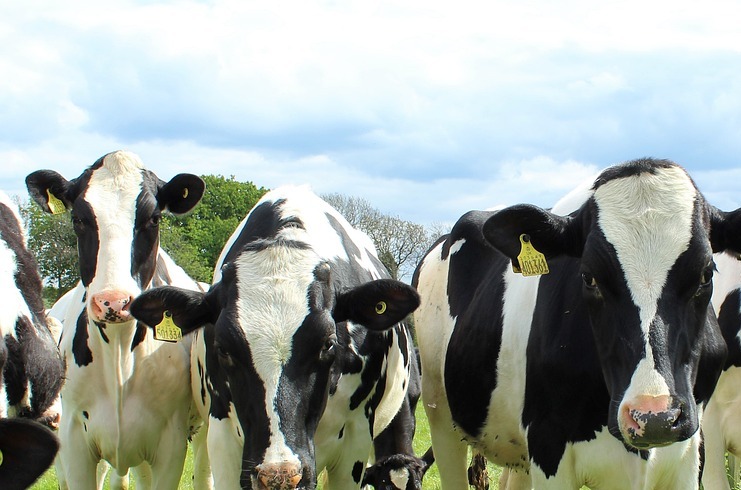New Zealand’s Dairy Milk Production Trend Amidst Price Fluctuation and Rising On-Farm Inflation

New Zealand is the seventh-largest dairy milk producer in the world, having reached 21.05 million metric tons (mmt) in 2022. The foundation of New Zealand's dairy industry relies on pasture-fed diets. However, herds commonly integrate purchased or imported feeds and various forage crops. Additional feeding is primarily administered through in-shed feeding systems or on feed pads, strategically employed to enhance milk yields and maintain optimal animal conditions. Given the seasonal nature of New Zealand's pasture growth, most of the calving activities are concentrated between late July and September. As a result, New Zealand’s milk production is highly seasonal, with almost 40% of the annual output concentrated in the fourth quarter of each year.
New Zealand’s Milk Production Trend
New Zealand’s dairy milk production totaled 15.82 mmt from Jan-23 to Oct-23, a 1.22% increase compared to the same period in 2022 but a 1.74% drop over the five-year average of 16.1 mmt. In Oct-23, milk production reached 3.02 mmt, a significant 20.8% month-on-month (MoM) growth but a slight 0.33% drop over Oct-22 and a 5.03% decline compared to the five-year average of 3.18 mmt. From Jan-23 to May-23, New Zealand’s milk production consistently surpassed 2022 levels. This robust performance was underpinned by strong dairy milk output during the autumn months (Mar-23 to May-23), reaching 4.32 mmt, the second-highest combined milk production for the period in a decade. This heightened milk production during the autumn period facilitated a recovery from the adverse impacts of the earthquake and Cyclone Gabrielle that struck New Zealand at the beginning of 2023. However, New Zealand's dairy milk production persistently trailed the 2022 output since Jun-23 and the five-year average since Aug-23. This decline in milk production is attributed to minimal investments in the dairy sector due to dwindling milk prices and rising farm input costs.
New Zealand’s Milk Price Trend
The average milk price stood at USD 34.16 per 100 kilograms (kg) in Sep-23, a 7.42% MoM increase. However, this average price represents a significant 24.49% drop compared to the peak of USD 45.24/100 kg recorded from Jan-22 to Mar-22 and a 7.8% decline over the five-year average of USD 37.06/100 kg. Notably, average monthly milk prices experienced a continuous decline from Jan-23 to Aug-23, with the most significant decrease recorded in Jul-23 at -15.63% MoM.
The United States Department of Agriculture (USDA) reveals that livestock farm input prices surged by 16.3% between Mar-22 and Mar-23, following a 10.2% increase in the previous 12-month period. This marks the highest rate since 1985, when it stood at 15.6%. According to DairyNZ's data, average farm costs registered an increase of around 13% between the past two seasons (2021/22 and 2022/23) and a substantial growth of 33% over the past three years. Notably, the largest increases in 2023 were recorded in farm debt interests, a critical parameter influencing the official cash rate (OCR). OCR accounts for over 10% of total farm expenditure, significantly contributing to the overall rise in on-farm inflation.
Experts predict that the key drivers of on-farm inflation in the next 18 months will depend on dairy industry debt and liabilities. The confluence of lower milk prices and escalating farm costs is squeezing farmers' profit margins, resulting in diminished investments in the dairy sector and potentially instigating a further reduction in the national herd.
Short-Term Outlook
Despite higher production costs and lower price received, New Zealand’s total milk production in 2023 might still surpass the 2022 level. However, total milk output in 2023 will depend on production during the spring season, which accounts for 50% of annual milk production. In 2024, New Zealand milk production is expected to amount to 21.4 mmt, a 0.47% drop compared to the 2023 estimate of 21.5 mmt and the third-lowest production in over a decade. This pessimistic projection is attributed to factors such as the forecasted El Niño weather pattern, as indicated in Tridge’s analysis, decreasing milk prices, on-farm inflation, and the subsequent gradual reduction of the national herd.
The recent uptick in milk prices since Sep-23 is expected to provide a brief reprieve, fueled by the approaching festive season that is likely to elevate both domestic and global demand for milk. However, despite this momentary price rebound, predictions suggest that milk prices are poised to linger below the five-year average of USD 37.06/100 kg for the remainder of 2023 and into 2024 while input costs continue to maintain a notably elevated trajectory.
